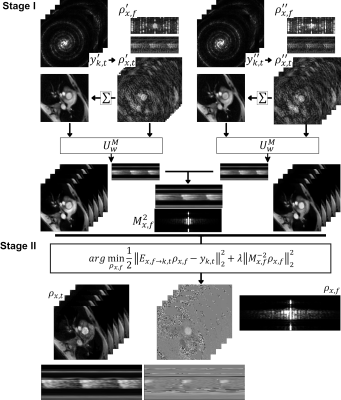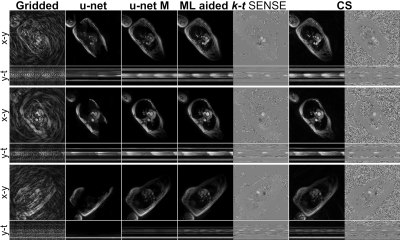1Institute of Cardiovascular Science, University College London, London, United Kingdom

Fig. 2. The ML aided k-t SENSE processing.
Stage I – the $$$M_{x,f}^2$$$ estimation. Both flow encoded ($$$y_{k,t}^{'}$$$) and compensated ($$$y_{k,t}^{''}$$$) data were processed as described [2]. The u-net results were combined for the final x-f signal estimation. Stage II – k-t SENSE: the linear conjugate gradient solver was used to minimise [1] and produce the final PCMR results.

Fig. 3. Imaging results.
$$$U_w$$$ reconstructions presented with smaller or larger artefacts: visible reconstruction patch boundary, signal removal. These are not visible on the $$$U_w^M$$$ results. In two cases $$$U_w$$$ removed heart structures (i.e. the bottom row). In these hard cases temporal blurring can be observed in the $$$U_w^M$$$ results. This had a small effect on the k-t SENSE magnitude results. However, it resulted in blurring of the extracted phase data Fig. 4.